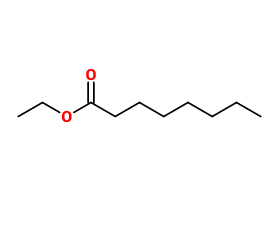
Photo credits: ScenTree SAS
Do you sell any of the raw materials? Would you like to let our users know?
Send an email to fournisseurs@scentree.coto learn about our advertising opportunities.
Do you sell any of the raw materials? Would you like to let our users know?
Send an email to fournisseurs@scentree.coto learn about our advertising opportunities.
General Presentation
-
CAS N° : 106-32-1
-
EINECS number : 203-385-5
-
FEMA number : 2449
-
FLAVIS number : 09.111
-
JECFA number : 33
-
Appearance : Colorless liquid
-
Density : 0,86
-
Volatility : Head
-
Price Range : €€
Physico-chemical properties
-
Molecular formula : C10H20O2
-
Molecular Weight : 172,27 g/mol
-
Log P : 3,84
-
Fusion Point : Donnée indisponible.
-
Boiling Point : 208°C
-
Detection Threshold : Donnée indisponible.
-
Optical rotation : Donnée indisponible
-
Vapor pressure : Donnée indisponible
-
Refractive Index @20°C : Donnée indisponible
-
Acid Value : Donnée indisponible.
-
Flash Point : 79 °C
Uses
Uses in perfumery :
Year of discovery :
Data not available.
Natural availability :
Ethyl Octanoate is present in nature in alcohols such as Rum, Whisky, Beer, Cognac
Isomerism :
Ethyl Octanoate is a constitutional isomer of Hydroxycitronellal and Florol®. However, its smell is quite different from the latter two compounds.
Synthesis precursor :
Ethyl Octanoate is not a precursor to the synthesis of another compound of olfactory interest.
Synthesis route :
Ethyl Octanoate can be synthesized by an esterification reaction between octanoic acid and Ethanol. This reaction involves an acid catalyst such as concentrated sulphuric acid, which speeds up the reaction.
Regulations & IFRA
Allergens :
This ingredient does not contain any allergen.
IFRA 51th :
This ingredient is not restricted for the 51th amendment


